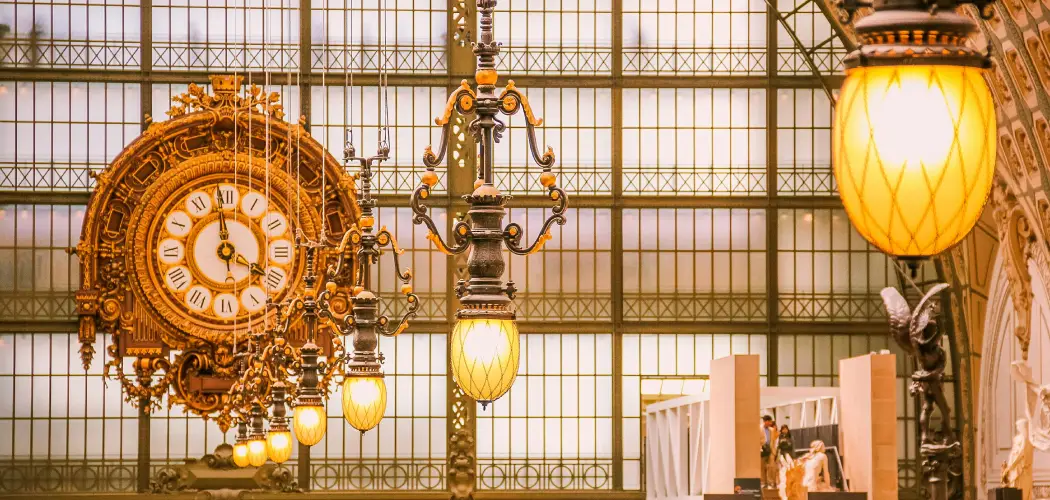Creating a cohesive lighting plan for your home involves more than simply choosing different fixtures for each room. Coordinating lighting fixtures requires a thoughtful approach to ensure the space feels unified and aesthetically pleasing. A well-coordinated lighting scheme not only enhances the visual appeal of your interiors but also provides functional illumination that suits your lifestyle.
This guide on how to coordinate lighting fixtures will walk you through the essential steps for coordinating lighting fixtures, taking into account style, scale, placement, and the layering of light to create a harmonious atmosphere in any setting.
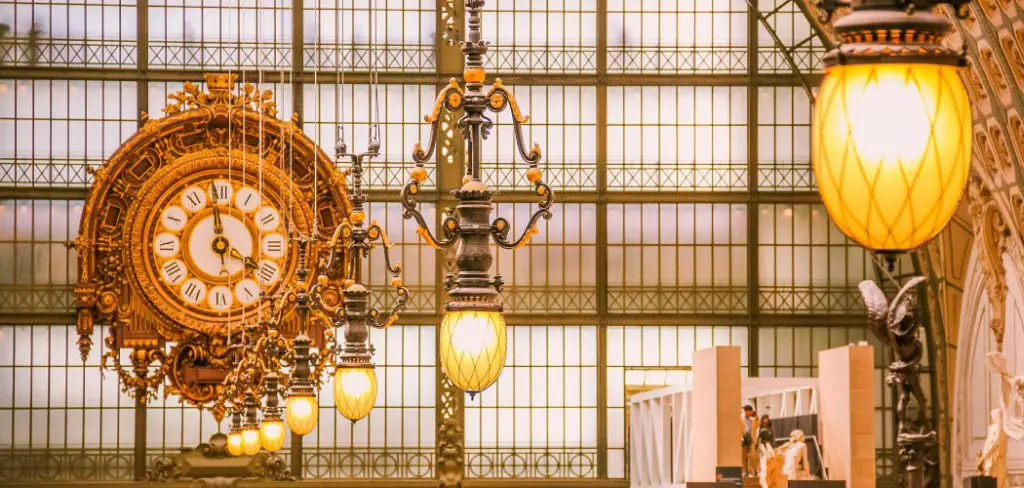
Why is Coordinating Lighting Fixtures Important?
Coordinating lighting fixtures is crucial for creating a well-balanced and inviting space. When fixtures are thoughtfully matched, they contribute to the overall aesthetic coherence of a room or entire home, enhancing its style and ambiance. Harmonized lighting elevates the architectural features of a space, draws attention to focal points, and ensures that lighting is not only about illumination but also about complementing the interior design.
Beyond aesthetics, coordinated lighting setups can improve functionality by providing appropriate task, ambient, and accent lighting, making day-to-day activities more enjoyable and efficient. Investing time in coordinating your lighting scheme can transform your living environment into a seamless and aesthetically pleasing space that supports your daily life and reflects your personal taste.
Needed Materials
- Tape Measure
- Paper and Pencil
- Access to Lighting Stores or Online Shopping Options
8 Steps on How to Coordinate Lighting Fixtures
Step 1: Determine Your Home’s Style
The first step in coordinating lighting fixtures is to define the overall style of your home. Understanding your home’s aesthetic will guide your lighting choices, ensuring they complement and enhance the existing decor. Consider architectural elements, furniture, color schemes, and the general theme of your interiors. Whether your home exudes a modern, traditional, eclectic, or minimalist vibe, selecting fixtures that align with this style will bring cohesion to your spaces.
For example, a contemporary home might benefit from sleek, geometric fixtures, while a more rustic setting could be complemented by warm, wrought-iron designs. Take the time to evaluate each room’s unique character and decide on a unified style direction before beginning your search for lighting solutions.
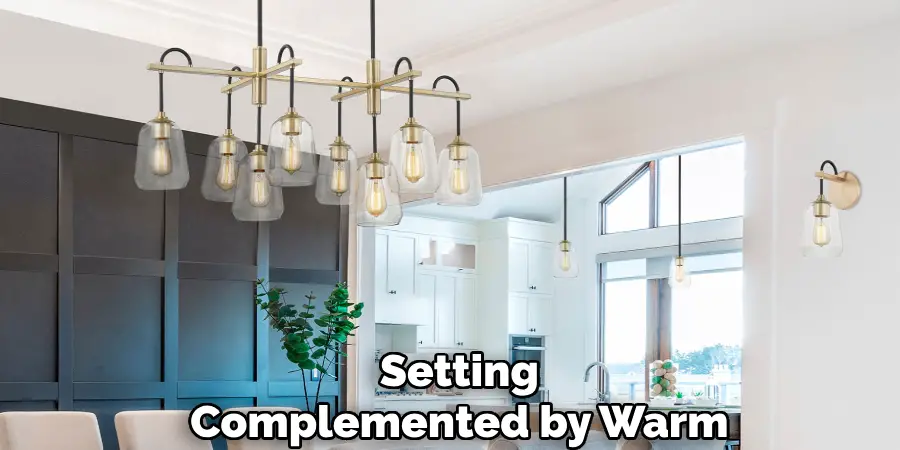
Step 2: Determine the Purpose of Each Room
Understanding the function of each room is a pivotal factor in coordinating your lighting fixtures. Each area of your home serves different purposes, and the lighting should reflect these needs. For instance, kitchens often require bright, task-oriented lighting to aid in cooking, while living rooms benefit from a mix of ambient and accent lighting to create a cozy and flexible gathering space. Bedrooms, typically used for relaxation and rest, might need softer, warmer lighting to promote a calming atmosphere, whereas home offices require focused task lighting to boost productivity.
By identifying the primary activities and functions of each room, you can choose lighting fixtures that provide both practical illumination and enhance the room’s intended use, ensuring your lighting scheme supports daily living activities effectively.
Step 3: Consider the Scale of Your Space
The size and layout of a room dictate the scale of lighting fixtures needed. A large living room with high ceilings might require more substantial statement pieces, while a small dining area could benefit from a single, smaller pendant light to add visual interest. In general, larger spaces can accommodate bigger and more dramatic fixtures, while smaller rooms look best with smaller-scale options that don’t overwhelm the space.
You should also consider the scale of the furniture and other elements in the room when selecting lighting fixtures. A large chandelier over a small dining table, for example, can throw off the balance of a space. Measure your rooms and furniture to determine the appropriate sizing for your lighting fixtures before making any purchases.
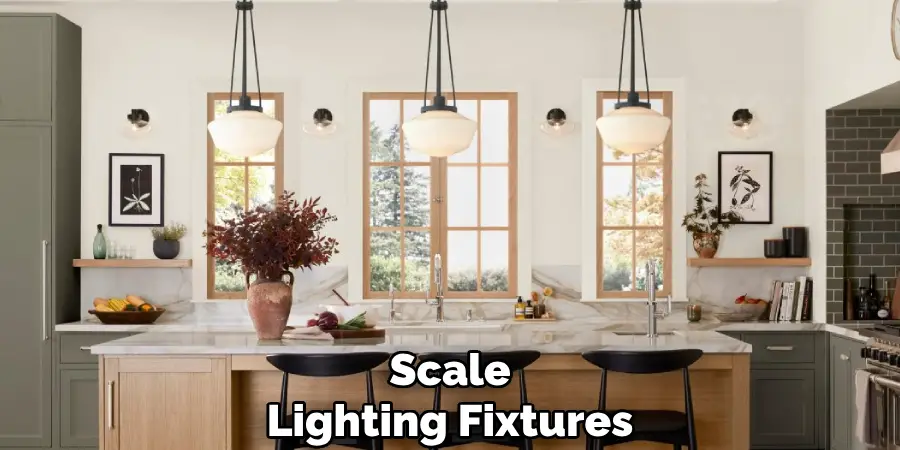
Step 4: Create Layers of Light
To achieve optimal illumination and ambiance, it is essential to incorporate different layers of light in your spaces. The three main types of lighting are ambient, task, and accent lighting. Ambient or general lighting provides overall illumination for a room, while task lighting serves specific functional purposes like reading or cooking. Accent lighting highlights specific areas or objects within a room that you want to draw attention to, such as artwork or architectural features.
When coordinating lighting fixtures, consider incorporating all three layers of light in each room for a well-rounded and functional lighting scheme. This approach will also add depth and interest to your spaces, enhancing the overall aesthetic appeal.
Step 5: Choose a Color Scheme
Color plays a significant role in interior design and can greatly impact the appearance of your lighting fixtures. Consider choosing fixtures with finishes that complement the existing color palette in each room. For example, if you have warm-toned walls and furniture, opt for gold or bronze finishes on your lighting fixtures rather than cool-toned silver or chrome.
Another option is to use lighting fixtures as an opportunity to add pops of color to your spaces. This approach works especially well in neutral-toned rooms, where bright and bold fixtures can serve as a focal point and add visual interest.
Step 6: Consider the Ceiling Height
The height of your ceilings can influence which lighting fixtures will work best in a room. For taller ceilings, consider options that provide more significant vertical presence, such as chandeliers or pendant lights with longer hanging chains. In contrast, lower ceilings are better suited for flush mount or semi-flush mount fixtures that hug the ceiling closely.
Be mindful of any obstructions like ceiling fans or beams when selecting your lighting fixtures to ensure they don’t clash visually but instead enhance the space.

Step 7: Balance Style and Functionality
While style is essential when coordinating lighting fixtures, it’s also crucial to consider functionality. A beautiful fixture that doesn’t provide enough light for the intended purpose of a room will ultimately be a poor choice. Consider the wattage and type of bulbs needed for each fixture to ensure they provide adequate illumination for the space.
Additionally, think about practical aspects like ease of cleaning and maintenance when selecting fixtures. Avoid overly intricate designs that could become challenging to clean over time.
Step 8: Mix and Match Fixture Types
Don’t be afraid to mix different types of lighting fixtures in your spaces. Combining various styles can add dimension and personality to a room as long as they are cohesive in terms of style and finish. For example, pairing a pendant light with wall sconces in a dining room or incorporating both recessed lighting and table lamps in a living room can create an interesting and layered lighting design.
The key is to balance the different fixtures and types of light in a way that complements the room’s overall style and purpose. Experiment with combinations until you find the perfect balance for your space.
Following these steps on how to coordinate lighting fixtures can help guide you in coordinating your lighting fixtures and creating a cohesive and functional lighting scheme for your home. Remember to consider the purpose, scale, layers, color, ceiling height, style, and functionality of each room when selecting and combining different lighting options. With careful planning and consideration, you can transform the ambiance and atmosphere of any space through strategic lighting choices.
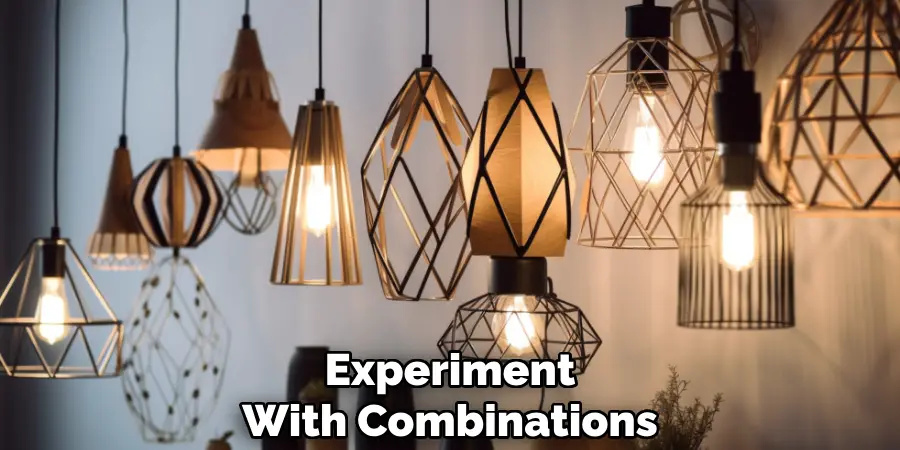
Frequently Asked Questions
Q1: Can I Mix Different Types of Lighting Fixtures in the Same Room?
A: Yes, as long as they are cohesive in terms of style and finish. Combining various fixture types can add dimension and personality to a space. The key is to balance the different fixtures and types of light in a way that complements the overall style and purpose of the room.
Q2: How Important Is Ceiling Height When Selecting Lighting Fixtures?
A: The height of your ceilings can greatly influence which lighting fixtures will work best in a room. Taller ceilings can accommodate more substantial statement pieces, while lower ceilings are better suited for flush or semi-flush mount fixtures. Be mindful of any obstructions like ceiling fans or beams when selecting your fixtures to ensure they enhance rather than clash with the space.
Q3: What Type of Bulbs Should I Use for My Lighting Fixtures?
A: Consider the intended purpose and wattage requirements for each fixture when selecting bulbs. For general ambient lighting, opt for warmer and more diffused light sources like LEDs or incandescent bulbs. For task lighting, choose brighter and more focused options like halogen or fluorescent bulbs. And for accent lighting, consider using adjustable spotlights with LED or halogen bulbs to highlight specific object or areas within a room.
Conclusion
Coordinating lighting fixtures can seem like a daunting task, but by following these steps on how to coordinate lighting fixtures, you can create a cohesive and functional lighting scheme that enhances your home’s style and atmosphere. Remember to consider each room’s unique character, function, scale, layers of light, color scheme, ceiling height, and balance between style and functionality when selecting fixtures.
Don’t be afraid to mix different types of lighting for added interest and personality. With careful consideration and planning, your lighting choices will contribute to an inviting and well-lit home for years to come. Happy decorating!

